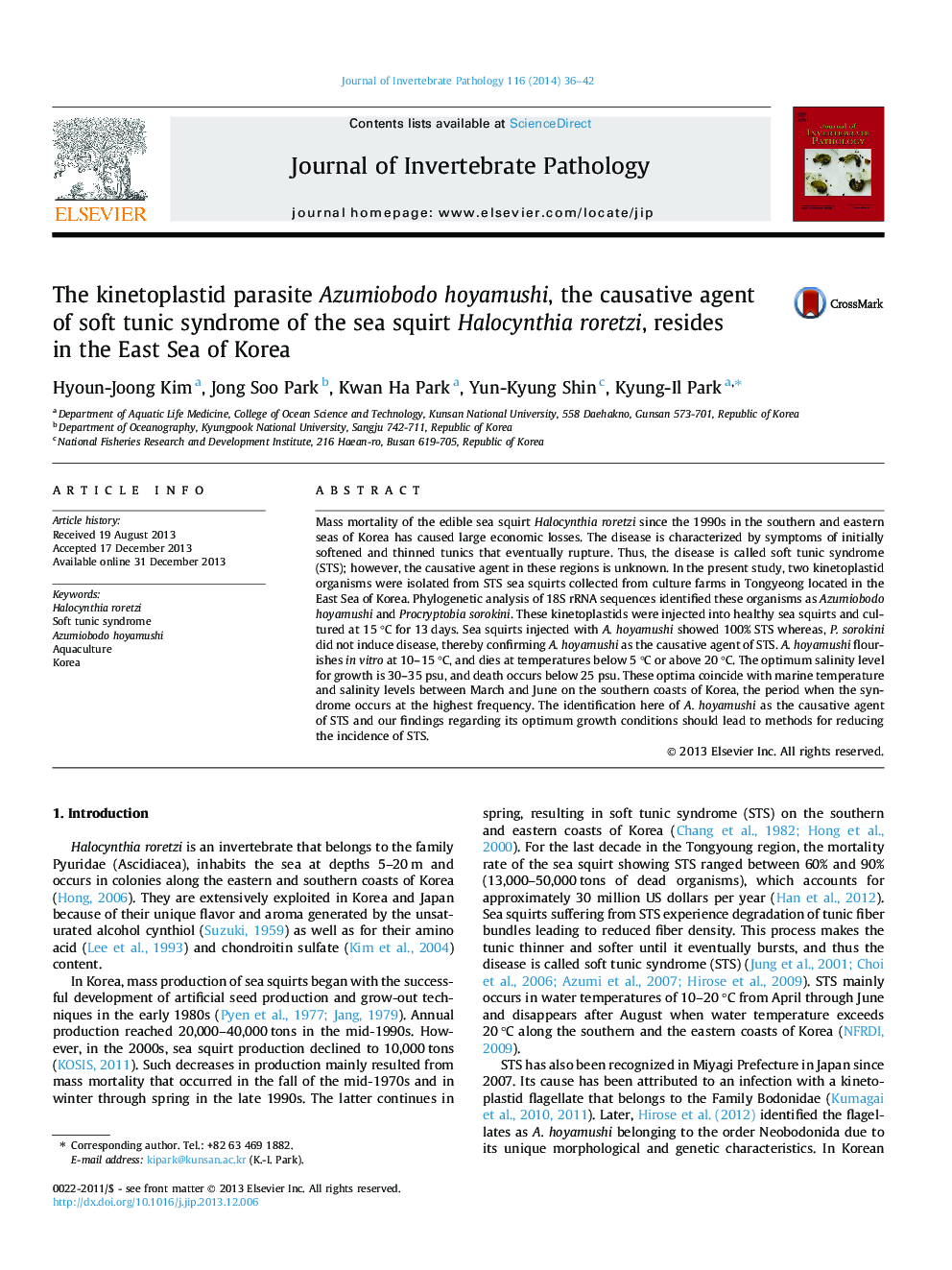| کد مقاله | کد نشریه | سال انتشار | مقاله انگلیسی | نسخه تمام متن |
|---|---|---|---|---|
| 4557727 | 1628236 | 2014 | 7 صفحه PDF | دانلود رایگان |

• We isolated two kinetoplastid organisms from sea squirts collected from Tongyeong, Korea.
• Phylogenetic analysis identified these organisms as A. hoyamushi and P. sorokini.
• Sea squirts injected with A. hoyamushi showed 100% STS, whereas P. sorokini did not.
• We established optimum water temperatures and salinities for A. hoyamushi in Korean waters.
• The optimum conditions for its growth should lead to methods for reducing the incidence of STS.
Mass mortality of the edible sea squirt Halocynthia roretzi since the 1990s in the southern and eastern seas of Korea has caused large economic losses. The disease is characterized by symptoms of initially softened and thinned tunics that eventually rupture. Thus, the disease is called soft tunic syndrome (STS); however, the causative agent in these regions is unknown. In the present study, two kinetoplastid organisms were isolated from STS sea squirts collected from culture farms in Tongyeong located in the East Sea of Korea. Phylogenetic analysis of 18S rRNA sequences identified these organisms as Azumiobodo hoyamushi and Procryptobia sorokini. These kinetoplastids were injected into healthy sea squirts and cultured at 15 °C for 13 days. Sea squirts injected with A. hoyamushi showed 100% STS whereas, P. sorokini did not induce disease, thereby confirming A. hoyamushi as the causative agent of STS. A. hoyamushi flourishes in vitro at 10–15 °C, and dies at temperatures below 5 °C or above 20 °C. The optimum salinity level for growth is 30–35 psu, and death occurs below 25 psu. These optima coincide with marine temperature and salinity levels between March and June on the southern coasts of Korea, the period when the syndrome occurs at the highest frequency. The identification here of A. hoyamushi as the causative agent of STS and our findings regarding its optimum growth conditions should lead to methods for reducing the incidence of STS.
Figure optionsDownload as PowerPoint slide
Journal: Journal of Invertebrate Pathology - Volume 116, February 2014, Pages 36–42